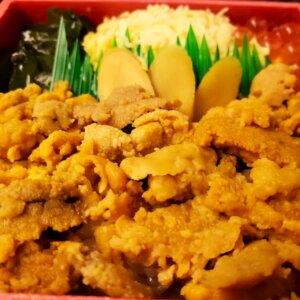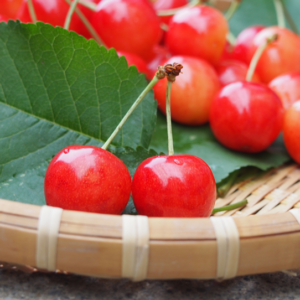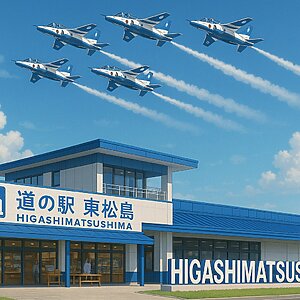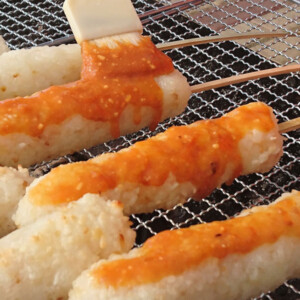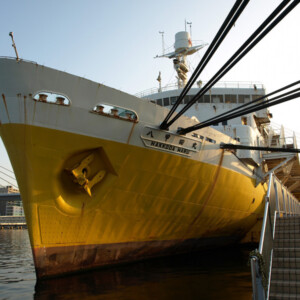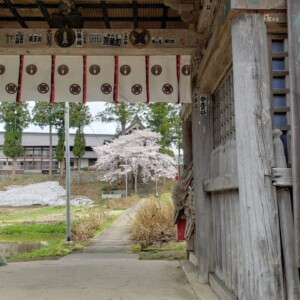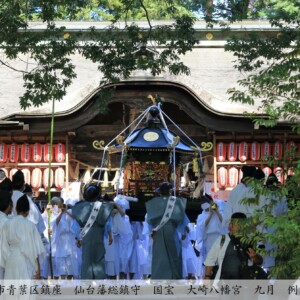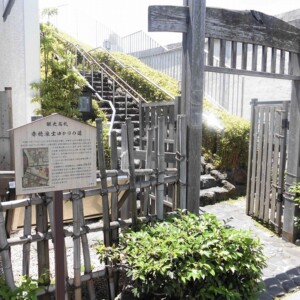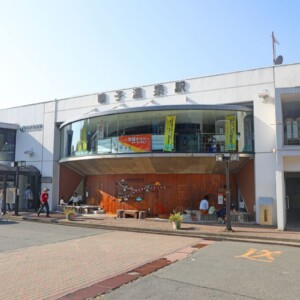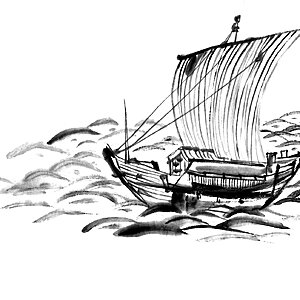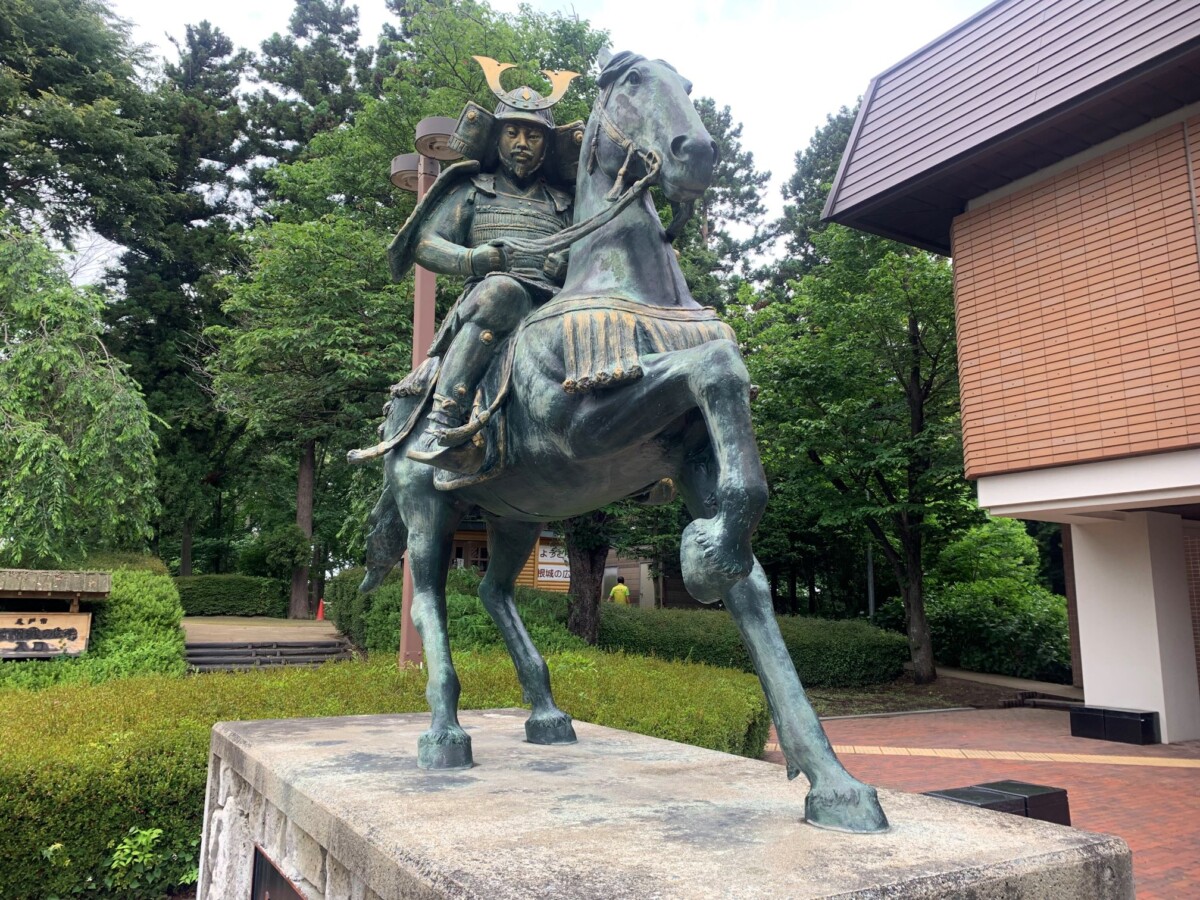
"Place names with doors" from 1 to 9 [Hachinohe and Kunohe edition] Mystery with different patterns only for the eight and nine positions
table of contents
the place names containing the character "To formerly known as the Nanbu Domain and Nukanobu County stretching from Aomori Prefecture to Iwate Prefecture, were lined up from south to north along the Oshu Kaido road up to Shichinohe.
However, Hachinohe and Kunohe are located south of Shichinohe, contrary to this rule, and Kunohe is located in Iwate Prefecture, next to Ichinohe and Ninohe, separated by a mountain
There are no historical documents that explain why the structure was arranged this way, and it remains a mystery to this day
Hachinohe, a city that has existed since the Jomon period

Hachinohe City faces the Pacific Ocean and is currently the second most populous core city in Aomori Prefecture (approximately 260,000 people)
There are many Jomon period ruins remaining in the city, and it is believed to have flourished as an Emishi settlement even
The first time the name appears in historical documents is Nanbu Minamoto no Yoritomo annihilated the Oshu Fujiwara clan, landed in Hachinohe.
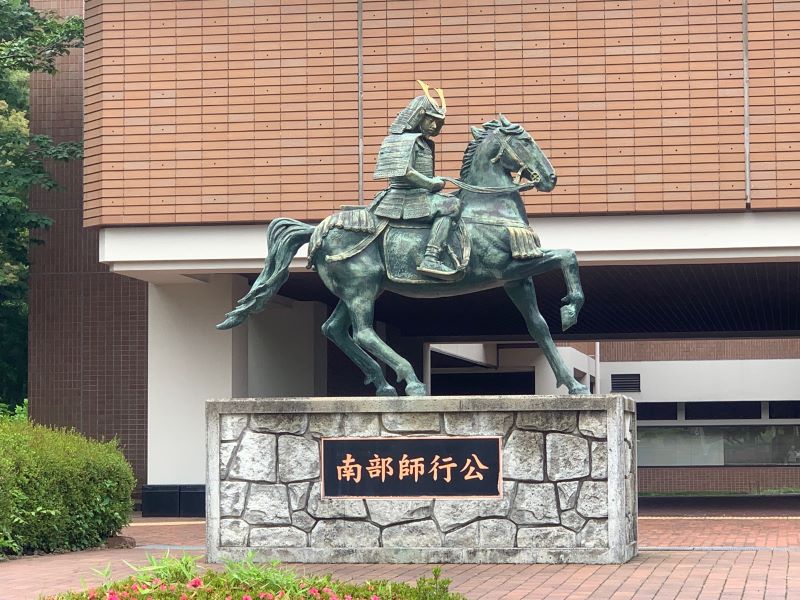
His third son, Sanenaga, is considered to be the founder of the Nejo Nanbu clan head there.
Nejo Castle ruins, a national historic site

Nanbu Michiyuki came to Hachinohe from Kai and built his castle here, naming it Nejo ) with the hope that it the castle that would become the foundation of the Southern Court
the Nejo Nanbu clan Tono City, Iwate Prefecture during the Edo period , the castle boasted its majesty as the central castle of the Hachinohe region.
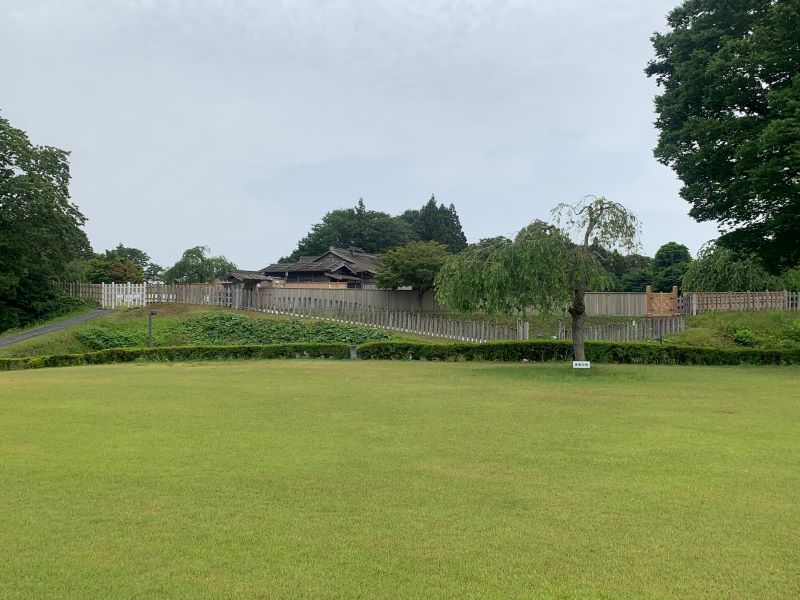
Many of the structures at the current castle ruins, including the main hall in the inner citadel, have been faithfully restored to their historical form. The site also houses the Hachinohe City Museum, and there are free volunteer guides on hand to provide tours
Please note that there is a fee to enter the main castle, and admission is limited to certain times
Nejo Castle Ruins <Information>
- Facility name: Nejo Castle Ruins (Nejo Castle Square)
- Location: Nejo, Hachinohe City, Aomori Prefecture
- Honmaru (fee required) Admission times: 9:00-17:00 (admission until 16:45)
- Closed: Mondays (except the first Monday of the month and public holidays), the day after public holidays, December 27th to January 4th
GOOGLE MAP
Miyagi Park (Hachinohe Castle Ruins)
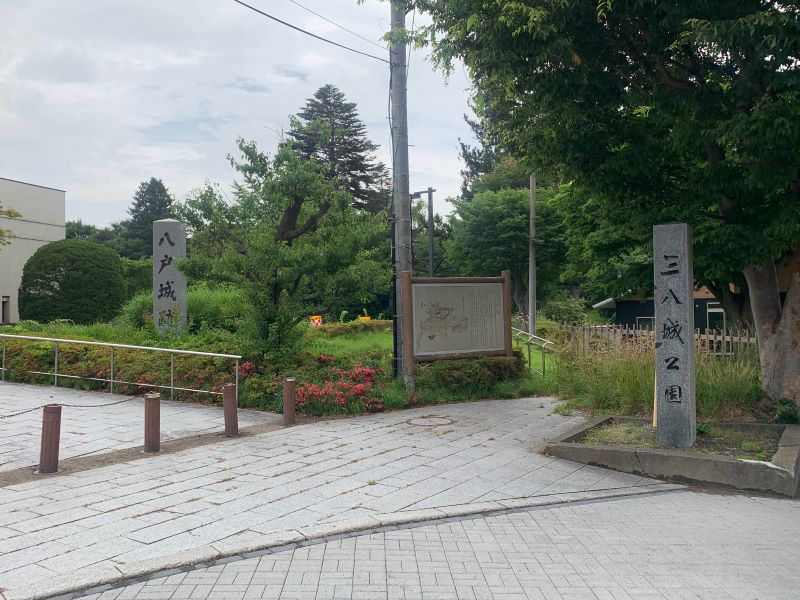
In 1664 (Kanbun 4), the second feudal lord, Nanbu Shigenao, died of illness, and with no successor, the Morioka domain was divided by the Edo Shogunate, and the Hachinohe domain was born as an independent domain with a 20,000 koku holding.
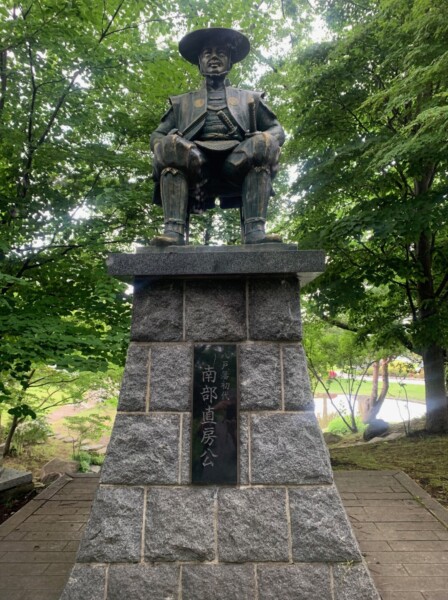
The first feudal lord, base castle, but instead named a building that had previously been used by the Morioka domain Hachinohe Castle and used it as his residence, but it was a castle with only a palace and gate, and no keep.
It is said that Sanhachijo is derived from " Hachinohe Castle in Sannohe County and is also a play on the fact that the eastern part of Aomori Prefecture is called Sanhachi Kamikita

Located in the center of Hachinohe city, it has an observation deck and a grassy plaza within the city and is also famous as a cherry blossom viewing spot
Miha Castle Park <Information>
- Facility name: Sanhachijo Park (Hachinohe Castle Ruins)
- Address: 1-14-49 Uchimaru, Hachinohe City, Aomori Prefecture
GOOGLE MAP
Hachinohe Castle Corner Palace Front Gate
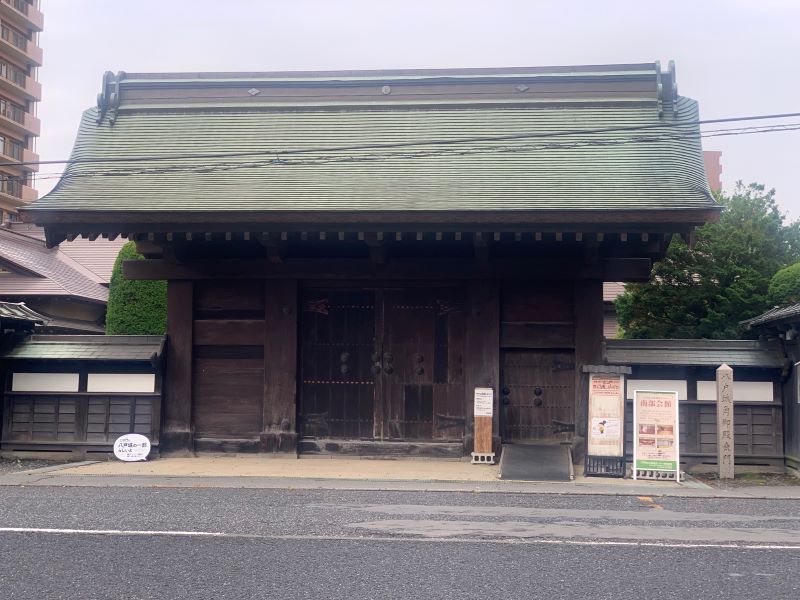
The front gate of Hachinohe City Cultural and Educational Center Nanbu Hall, located near Sanhachijo Park, Kado Palace " from the feudal domain era. It was built as a castle gate befitting the status of the domain and is one of the largest in Japan.
" Munamon " and consists of a gabled roof covered with copper sheets in the Tochibuki style, resting on four thick pillars supporting a ridgepole connected by a crown beam. Its imposing appearance is the only remaining vestige of Hachinohe Castle on the castle ruins.
Hachinohe Castle Corner Palace Front Gate <Information>
- Facility name: Hachinohe Castle Corner Palace Front Gate
- Address: 3-3-6 Uchimaru, Hachinohe City, Aomori Prefecture
GOOGLE MAP
Kushibiki Hachiman Shrine, the main shrine of the Nanbu clan
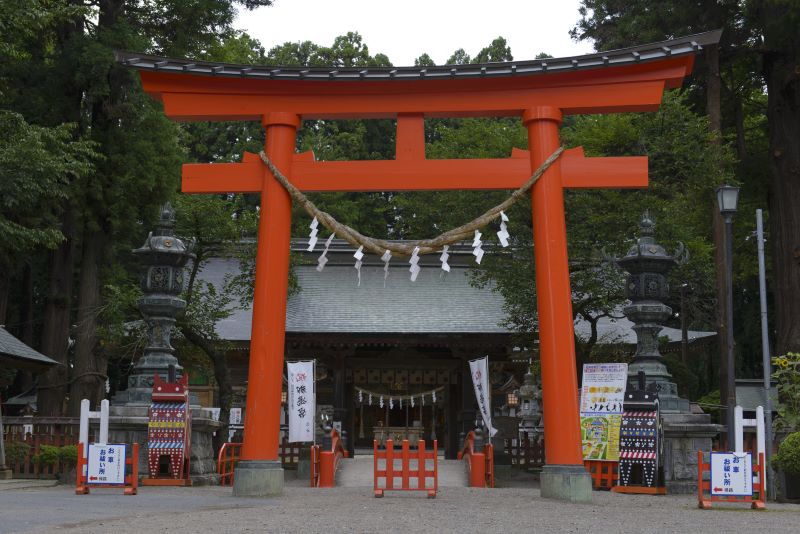
The origin of the Hachiman Shrine is said to be that " Nambu Mitsuyuki built it in Kushibiki, enshrining the sacred object of Hachiman Shrine in Nanbu-go, Kai, and praying for lasting military fortune, " and it is said to have been built during the Kenkyu era (1190-1199).
The vast grounds are lined with sacred cedar trees hundreds of years old and the main hall, which is an Important Cultural Property, and are home to treasures such as Akaitodoshi Yoroi (Red Armor) and Shiroitodoshi Tsumadori (White Armor
, was also called Yonohe Hachiman Shrine because it was ruled by the Kushibiki clan, who are descendants of the Yonohe clan. this is the mythical Yonohe ," but this is not certain.
Kushihiki Hachimangu Shrine<Information>
- Facility name: Kushihiki Hachimangu Shrine
- Location: 3 Yawata Hachiman-cho, Hachinohe City, Aomori Prefecture
- Telephone number: 0178-27-3053
- URL: Kushibiki Hachiman Shrine official website
GOOGLE MAP
The last place name with "to" in it is Kunohe
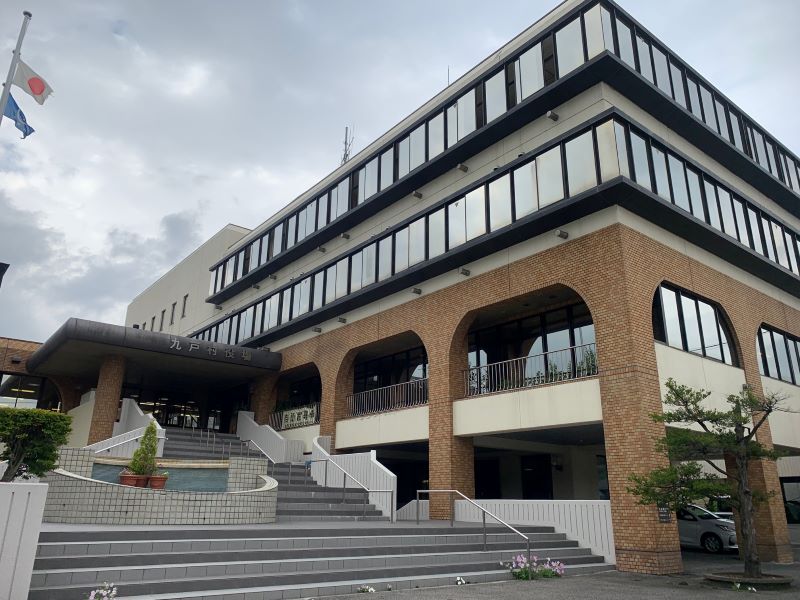
Located in northern Iwate Prefecture, further south from Hachinohe, it is a mountain village with few plains, with houses lined up along the Setsukinai River
Nanbu Mitsuyuki's sixth son, Yukitsura, took possession of Ibonai in Kunohe County and named himself the Kunohe clan, but there are also theories that the Ogasawara clan or the Nikaido clan were the ancestors, so this is not certain.

When it comes to the Kunohe clan Kunohe Masazane is famous, but there is a theory that he was given Fukuoka (present-day Ninohe City) as a reward for his military achievements and moved from present-day Kunohe Village to Kunohe Castle in Ninohe City.
Roadside and town stations where you can enjoy Kunohe
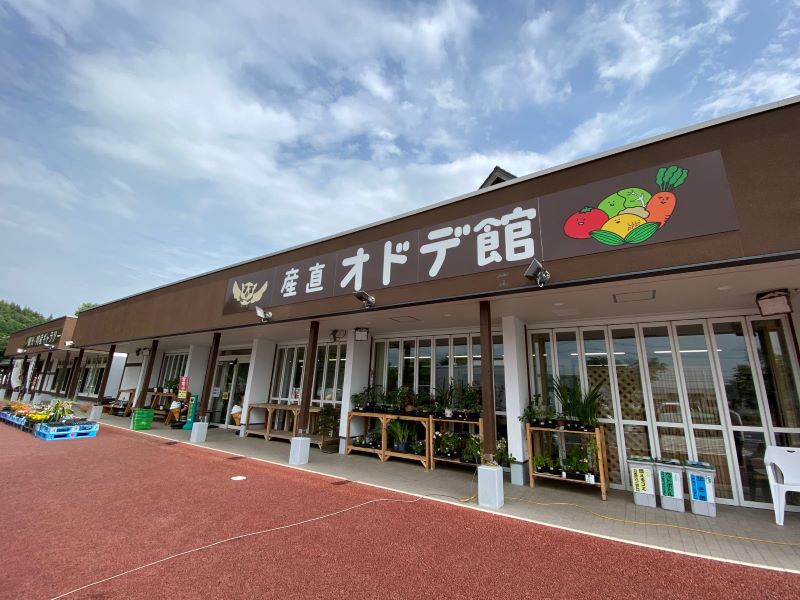
If you want to enjoy gourmet food such as Kunohe's local specialties and local flavored gelato, we recommend the Oritsume Roadside Station " Ododekan Mt. Oritsume

The shop sells the village's specialty sweet tea, as well as goods related to the local mascot " King of Chicken Oritsume ," you can sample the local dish " Hittsumi ."
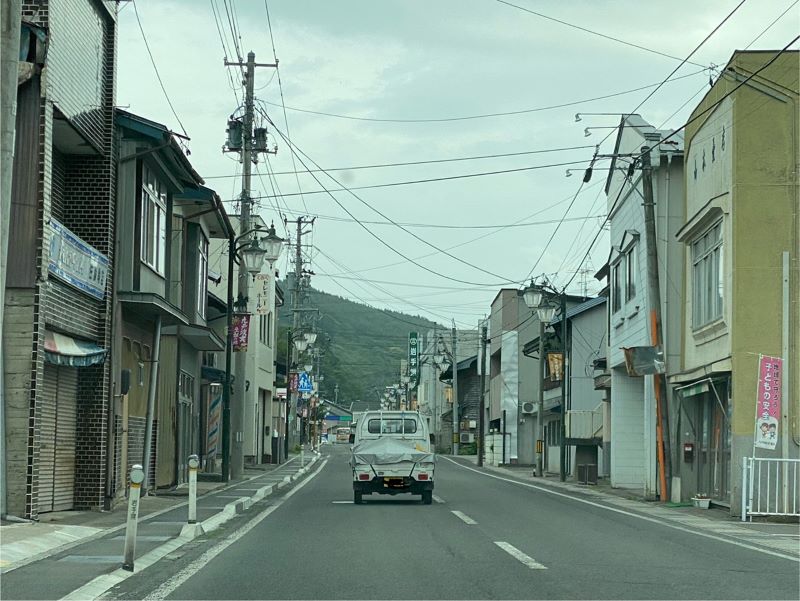
You can also purchase souvenirs such as sweet tea, grape juice, grains, kakke, and Nanbu rice crackers at Masazanekan on the main street of the village,
Oritsume Roadside Station "Ododekan" <Information>
- Facility name: Oritsume Roadside Station "Ododekan"
- Address: 28-1 Yamaya 2nd District, Kunohe Village, Kunohe District, Iwate Prefecture
- Phone number: 0195-42-4400
- Business hours: 8:00-19:00
- URL: Kunohe Village Official Website
GOOGLE MAP
Town Station "Masazanekan" <Information>
- Facility name: Town Station "Masazanekan"
- Location: Iwate Prefecture, Kunohe Village, Kunohe District, Ihonai 11th District 47-1
- Telephone number: 0195-42-2226
- Business hours: 9:00-18:00
- URL: Kunohe Village Official Website
GOOGLE MAP
summary
So far, we have introduced a series of rare place names containing the character "to" (door
Blogs and other sites have introduced journeys that visit these place names with "to" in them in order, starting from Ichinohe to Kunohe, including the four houses whose locations are unclear, much like a pilgrimage
Why not try touring the ancient Nukabe district, visiting each of the areas from Ichinohe to Kunohe in order, like a pilgrimage to sacred sites in an anime, and experience the equestrian culture of Tohoku?
Furthermore, the "sacred sites" that you visit with place names that include the character "to" are often located in places that are inconvenient to reach by public transportation, so it is recommended that you make the pilgrimage by car, such as your own car or a rental car


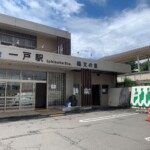







!["Place names with 'To' in them" from 1 to 9 [Shichinohe Edition] The northernmost To, where the image of a horse breeding area remains strong Shichinohe Catch](https://jp.neft.asia/wp-content/uploads/2024/07/286d15017199ce278766930f20fcf2e8-150x150.jpg)
!["Place names with doors" from 1 to 9 [Ichinohe and 2 nohe] The origin of the Ichinohe was a town of Jomon ruins, and why is there a Kunohe Castle ruins in Ninohe? IMG_5569](https://jp.neft.asia/wp-content/uploads/2024/07/IMG_5569-150x150.jpg)
!["Place names with 'to' in them" from 1 to 9 [Yonohe Edition] Where was the legendary Yonohe? Explore the mysterious Yonohe! Yonohe Catch](https://jp.neft.asia/wp-content/uploads/2024/07/b5ef6cf53fbfad9ad5956ac294a72ed4-150x150.jpg)
!["Place names with doors" from 1 to 9 [Sannohe] Sannohe, the birthplace of the Nanbu clan, is associated with famous places, historical sites and cat towns Sannohe Catch](https://jp.neft.asia/wp-content/uploads/2024/07/68def385b00c53bbd560d023270a45ba-150x150.jpg)
!["Place names with doors" from 1 to 9 [Five and Six Doors Edition] Two simple yet delicious doors Gonohe Catch](https://jp.neft.asia/wp-content/uploads/2024/07/4b7be42f1b789d8475c0e7b0b5c9ab58-150x150.jpg)



